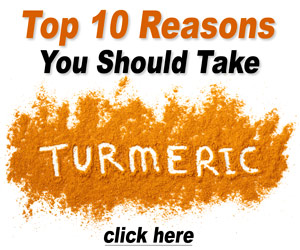Fungal Infection and Hair Loss

Tinea capitis is a fungal infection of the scalp (commonly referred to as ringworm of the scalp) that causes dry, scaly lesions. Scalp ringworm can also result in patchy alopecia areata hair loss. It is the most common fungal infection in young children, and is usually caused by Microsporum canis and Trichophyton tonsurans types of fungus.(145, 146)
Severe types or chronic, untreated hair loss caused by ringworm can lead to cicatricial alopecia. However, thinning hair from ringworm is usually non-scarring and treatment almost always results in complete regrowth.(22, 76)
Hair Loss Symptoms Caused by Ringworm
Symptoms of scalp ringworm can include:(76, 146)
- Sharply localized patches of hair loss (usually broken off at the scalp) and scaly dry plaque; non-inflammatory (common).
- Swollen lymph nodes in the front and back of the neck.
- Hair broken off at or close to scalp, creating a black dotted appearance (uncommon).
- Red, inflamed, and scaly lesions on the scalp that progresses to thick yellow crusty lesions (sometimes with a foul-smelling discharge) that involve the hair follicle and can lead to scarring hair loss.
- Kerion—a boggy, extremely painful, and inflamed lesion with foul smelling pus (may require surgical drainage) and hair that falls out as opposed to breaking; can lead to permanent, scarring hair loss.
However, there are often cases of scalp ringworm that present with barely noticeable, mild symptoms or even none at all. These patients are asymptomatic carriers of the infection but should still be treated with fungicidal shampoo.(76)
Diagnosing Scalp Ringworm
Evolving changes in the predominant type of fungus may cause some difficulty in diagnosing tinea capitis. That's because some species do not produce green fluorescence detectable with the Wood's lamp (e.g., the most prevalent types now in the United States and Europe).(146)
However, scalp ringworm should always be considered in any child with scaling and patchy hair loss on the scalp. Diagnosis is confirmed with a fungal culture obtained with a moist cotton swab.(146)
Medical, Herbal, & Nutritional Supplement Treatments for Scalp Ringworm
Scalp ringworm requires systemic treatment, and topical treatment is also recommended. Typical conventional treatments for scalp ringworm include:(76, 145, 146)
- Systemic oral antifungal agents (e.g., griseofulvin, itraconazole, ketoconazole, and fluconazole)
- Oral steroids (e.g., prednisone) and antibiotics for painful kerion lesions
- Topical steroids and oral antihistamines (if a rash develops in response to antifungal agents)
- Anti-fungal shampoo (e.g., ketoconazole 2% or selenium sulfide shampoo)
Caution! Help Prevent Drug Resistance
There appears to be some drug-resistance developing in the fungal organisms that cause ringworm. Experts strongly stress the importance of completing the full course of treatment (typically 6-8 weeks, but up to 12-16 weeks in resistant cases) to prevent recurrence.(146)
It is also recommended that family members and pets be screened for infection, and pets treated if the particular fungus is determined to be Microsporum canis.(145)
Herbal Treatments for Scalp Ringworm
| HERBAL REMEDIES FOR TINEA CAPITIS | ||
|---|---|---|
| HERB | HOW IT WORKS | RECOMMENDED DOSAGE OR USE |
|
(Cassia tora) |
Question: How does chakramarda work to treat scalp ringworm? Answer: Chakramarda has a number of properties that can help patients with scalp ringworm:
|
Question: What doses of chakramarda be taken to treat scalp ringworm? Answer: Chakramarda can be taken as a supplement or a tea:
Question: Is chakramarda dangerous to use? Answer: Chakramarda has abortifacient properties and should NOT be used by pregnant women.(147) |
|
(Cassia grandis) |
Question: How does apple blossom cassia work to treat scalp ringworm? Answer: Apple blossom cassia leaves have antiseptic and fungicidal properties that can help patients with scalp ringworm.(147) |
Question: How is apple blossom cassia used to treat scalp ringworm? Answer: Apple blossom cassia leaves are incorporated into an ointment for topical use in skin conditions (including tinea).(147) Question: Is apple blossom cassia dangerous to use? Answer: Although is prescribed in traditional medicine both topically and orally for other conditions, apple blossom cassia should NOT be used by pregnant women because of abortifacient properties.(147) |
|
(Evolvulus alsinoides) |
Question: How does conch flower work to treat scalp ringworm? Answer: Conch flower has anti-inflammatory, antioxidant, and immune boosting properties.(147) |
Question: How is conch flower used to treat scalp ringworm? Answer: Herbal essential oil containing extracts from conch flower is used topically to treat scalp ringworm.(148) |
|
Garlic (Allium sativa) |
Question: How does garlic work to treat scalp ringworm? Answer: Garlic has a number of properties that can help patients with scalp ringworm:
|
Question: How is garlic used to treat scalp ringworm? Answer: Steep some crushed garlic in olive oil and apply to scalp with a cotton ball to treat ringworm.(112) |
|
Ginger (Zingiber officinale) |
Question: How does ginger work to treat scalp ringworm? Answer: Ginger has a number of properties that can help patients with scalp ringworm: |
Question: How is ginger used to treat scalp ringworm? Answer: Add one ounce chopped ginger to a cup of boiling water and apply the cooled liquid to affected areas with a cotton ball.(112) |
|
(Glycyrrhiza glabra) |
Question: How does licorice work to treat scalp ringworm? Answer: The root of the attractive licorice plant (a legume native to southern Europe and Asia) is used in traditional medicines for its antifungal and anti-inflammatory properties.(112) |
Question: How is licorice used to treat scalp ringworm? Answer: Steep six teaspoons of powdered licorice in one cup of boiled water for twenty minutes and apply the cooled liquid with a cotton ball to affected areas on the scalp.(112) |
|
(Chamaesyce hirta) |
Question: How does pill-bearing spurge work to treat scalp ringworm? Answer: Pill-bearing spurge has anti-inflammatory, antiviral, antibacterial, and antiseptic properties.(147) |
Question: How is pill-bearing spurge used to treat scalp ringworm? Answer: Pill-bearing spurge is applied topically to treat scalp ringworm and other skin conditions.(147) |
|
(Lycopersicon esculentum) |
Question: How does tomato work to treat scalp ringworm? Answer: Tomatoes have antioxidant, anti-inflammatory, antiseptic, and fungicidal properties. They are used in traditional medicines to treat ringworm.(147) |
Question: How are tomatoes used to treat scalp ringworm? Answer: Add tomatoes to your diet to help with ringworm. Fresh juice from green or red tomatoes can also be applied directly on the scalp.(147) |
|
(Curcuma longa) |
Question: How can turmeric help treat scalp ringworm? Answer: Turmeric oil shows antifungal properties against tinea. Additionally, the curcumin pigment compounds that make turmeric golden yellow are photosensitive. Combined with phototherapy, curcumin compounds could help effectively treat scalp ringworm.(441, 442) |
Question: How should turmeric and curcumin be used to treat scalp ringworm? Answer: Turmeric is a spice commonly used in many recipes. Both turmeric and curcumin can be taken as oral supplements. Turmeric paste and turmeric oil can be applied to the skin.(441) |



